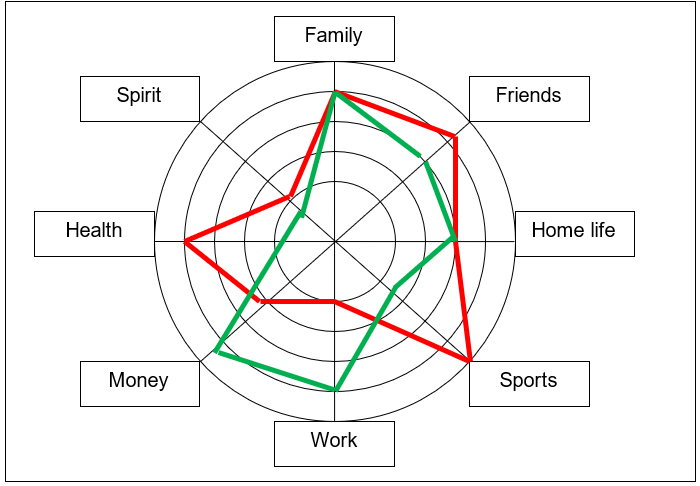Improving work-life balance: The work-life balance wheel
To improve our work-life balance, we need to consider how we allocate our time and across different life domains and how closely this is aligned with our personal values. The work-life balance wheel is a useful, self-reflective tool to help accomplish this (see Grant & Kinman, 2014). Make a list of the most significant work and non-work elements in your life – they may include the following:
- Career, education, training and personal development.
- Relationships with partner, children, other family members and friends.
- Health, exercise and nutrition.
- Fun and recreation.
- Hobbies, interests and creative activities.
- Community activities.
- Emotional wellbeing and personal growth.
- Spirituality or religious commitments.
Next, plot each element on a wheel representing the amount of attention you currently give to each aspect, allocating scores of 1 to 5 (see below), where the inner circles represent low scores and the outer circles for higher scores. A low score (1 or 2) suggests that you are not giving this aspect much consideration, whereas a score of 5 shows that you give it a great deal. Indicative scores are shown by the green line in the example below.
The next step is to consider the level of attention you would like to give to each aspect of your life. Provide a second set of scores for each dimension on the same wheel: as above, a low score (1 or 2) means that this aspect is not very important to you, whereas a high score (4 or 5) indicates that it is very important. The example below shows these scores as a red line.
Finally, compare any discrepancies between the two sets of scores and identify where the biggest differences lie. In the example you can see that the individual who has drawn up their wheel is spending considerable time and energy at work, and financial concerns are also a key focus. Health, wellbeing and exercise and time with friends are getting much less attention than desired. Is this sustainable and what could they do to change this?
